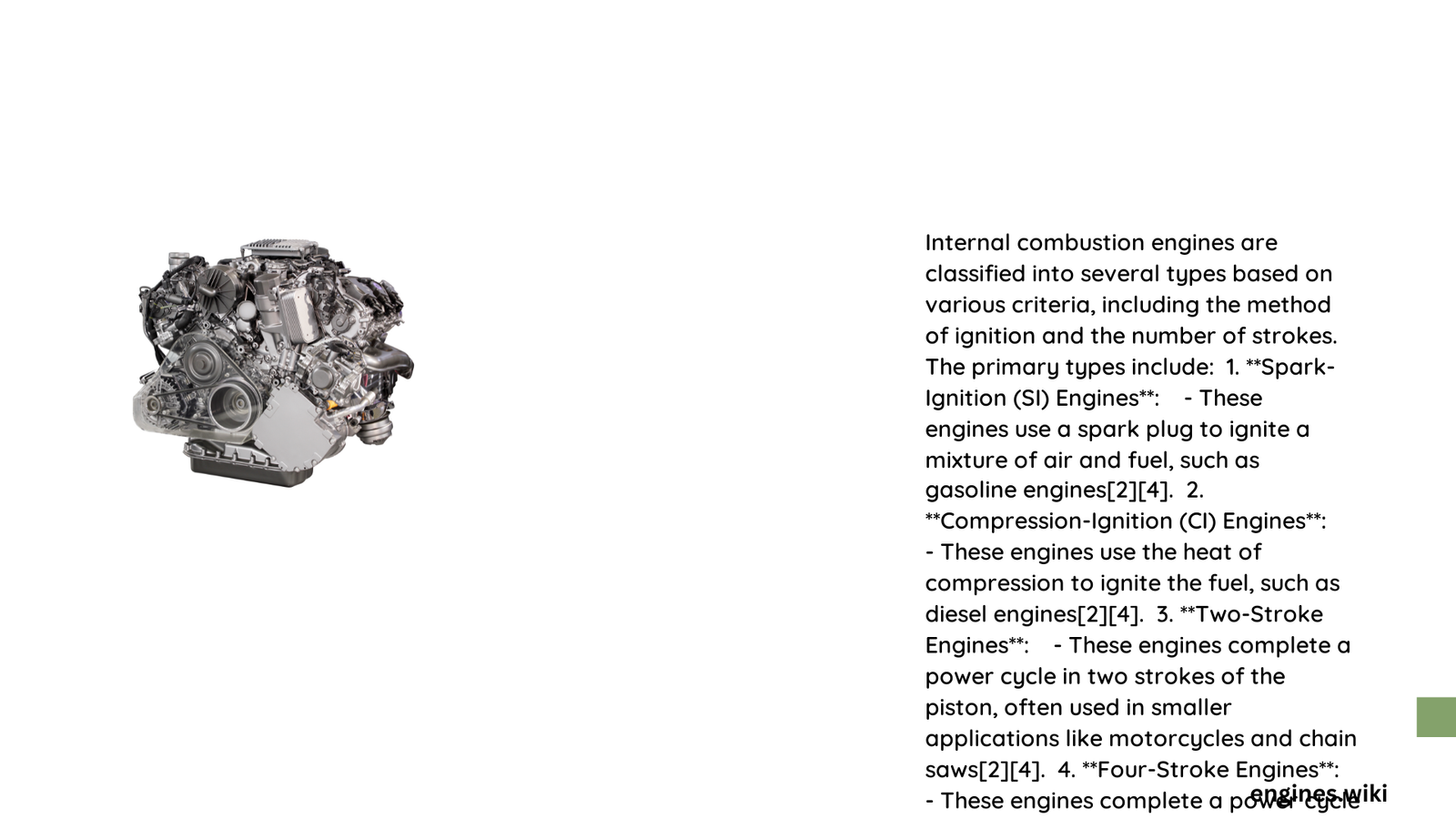Internal combustion engines represent a critical technological innovation in mechanical engineering, transforming fuel energy into mechanical power through controlled combustion processes. These engines operate by burning fuel within a confined space, generating high-pressure gases that drive mechanical components, enabling transportation, power generation, and industrial machinery across multiple sectors worldwide.
What Are Internal Combustion Engines?
Internal combustion engines are mechanical systems that convert chemical energy from fuel into mechanical energy through controlled combustion processes. These engines generate power by burning fuel inside a combustion chamber, creating high-pressure gases that drive pistons or rotors.
Types of Internal Combustion Engines
What Makes Spark Ignition Engines Unique?
Spark ignition engines, commonly known as gasoline engines, utilize electrical sparks to initiate fuel combustion. Key characteristics include:
- Fuel Mechanism: Uses spark plugs to ignite air-fuel mixture
- Typical Applications: Passenger vehicles, small machinery
- Efficiency Range: 20-30% thermal efficiency
| Engine Type | Fuel | Thermal Efficiency | Typical Power Output |
|---|---|---|---|
| Spark Ignition | Gasoline | 20-30% | 100-200 HP |
How Do Diesel Engines Operate?
Diesel engines differ from spark ignition engines through compression-based fuel ignition:
- Combustion Method: High-compression ratio triggers fuel ignition
- Efficiency Advantages: 40-50% thermal efficiency
- Torque Characteristics: Higher torque production
- Common Uses: Trucks, heavy machinery, industrial equipment
What Characterizes Rotary Engines?
Rotary engines, or Wankel engines, feature unique design principles:
- Triangular rotor instead of traditional pistons
- Compact engine architecture
- Smoother power delivery
- Limited modern applications
What Defines Two-Stroke Engines?
Two-stroke engines complete power cycles in two piston movements:
- Combine intake, compression, combustion, and exhaust
- Typically used in smaller equipment
- Lower thermal efficiency (15-20%)
- Common in motorcycles, lawn equipment
Technical Considerations for Internal Combustion Engines

Performance Factors
Several critical factors influence internal combustion engine performance:
- Compression Ratio: Determines energy conversion efficiency
- Fuel Type: Impacts combustion characteristics
- Thermal Management: Affects overall engine reliability
- Emissions Control: Crucial for environmental compliance
Emerging Technological Trends
Modern internal combustion engines are evolving with:
- Improved fuel injection systems
- Advanced materials
- Enhanced computational modeling
- Hybrid integration strategies
Conclusion
Internal combustion engines represent a complex technological domain with diverse design approaches, each offering unique advantages for specific applications. Understanding their fundamental characteristics helps engineers and enthusiasts appreciate their critical role in modern mechanical systems.
